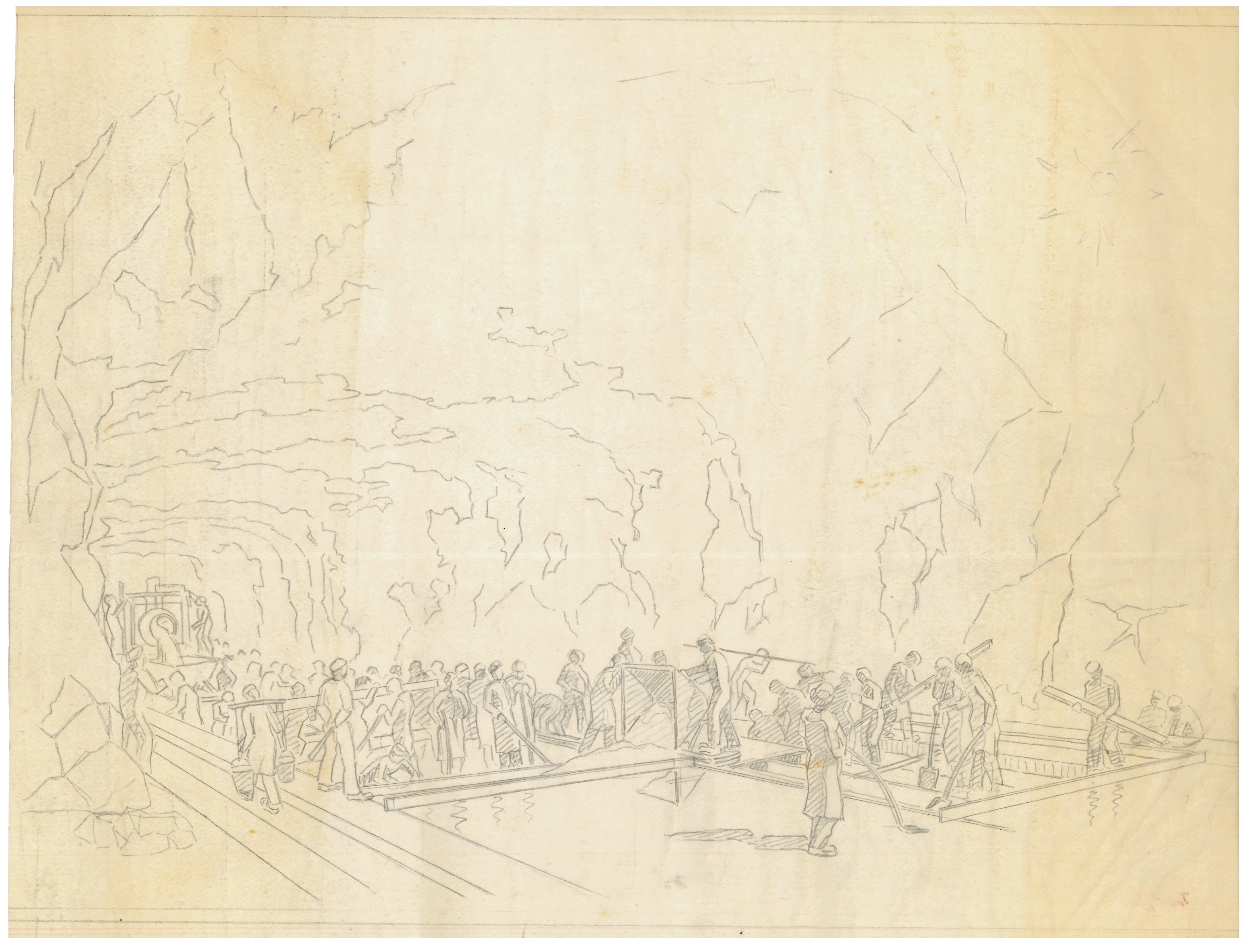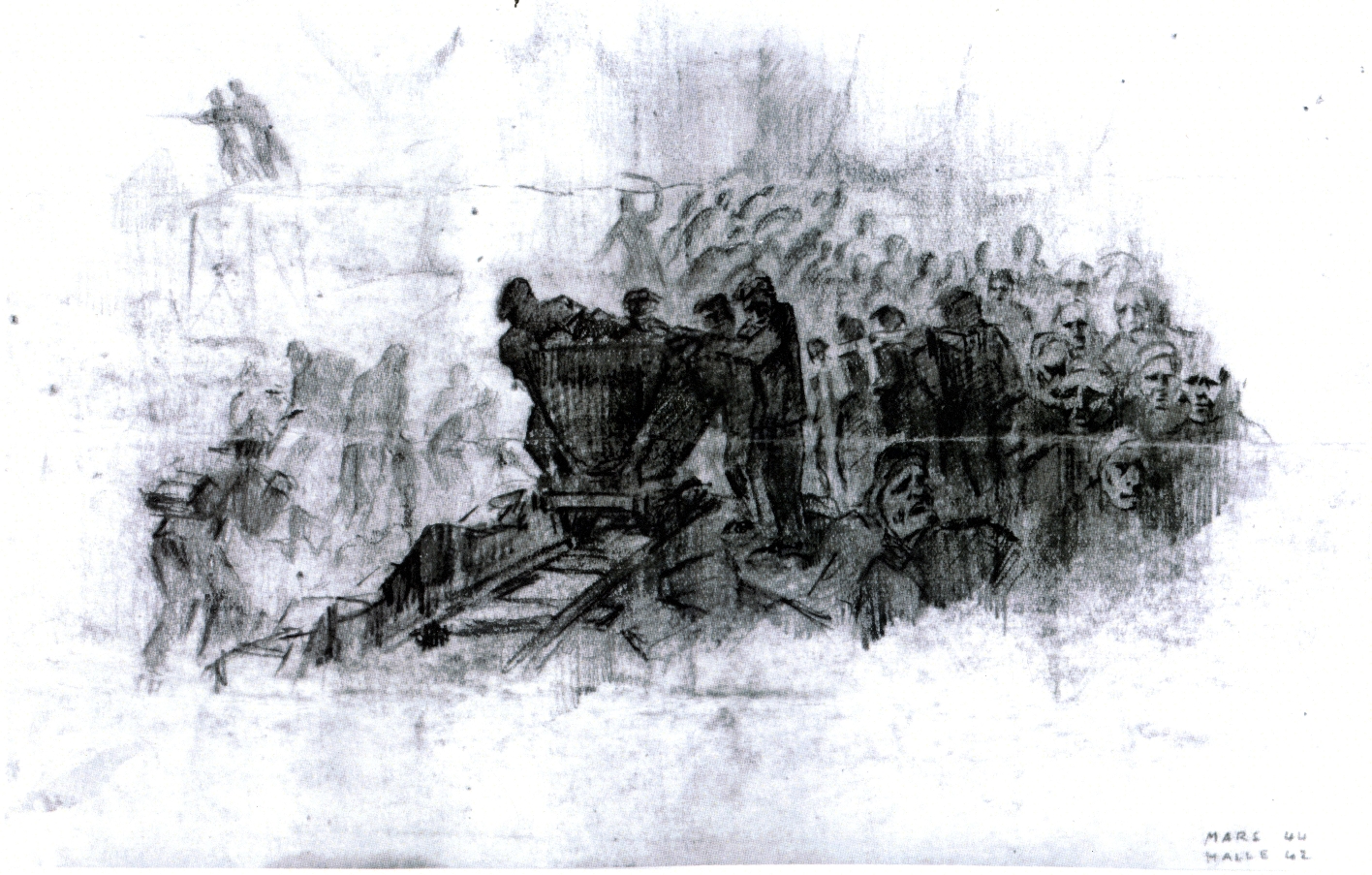
Drawing of the “factory chronologist” Werner Brähne
(KZ-Gedenkstätte Mittelbau-Dora)

Drawing of the French inmate Guy Boisot, March 1944
(Centre d’Histoire de La Coupole)
When the first 107 inmates arrived there were not yet any above-ground barracks. The SS’s priority was the construction of the V2 weapons facility, for which new inmates arrived almost daily. By the end of the year there were more than 10,000. They worked in two twelve-hour shifts expanding the tunnels, laying rails, and installing a ventilation system. Later they also installed the machines for the production of the rockets.
In the first days the inmates slept in tents above ground, later four side chambers in the underground tunnel system served as sleeping quarters. Only a few meters away, other inmates were working on the tunnel expansion. Explosions filled the air with dust. The SS was indifferent to the inmates’ physical condition, their deaths were considered collateral damage.

